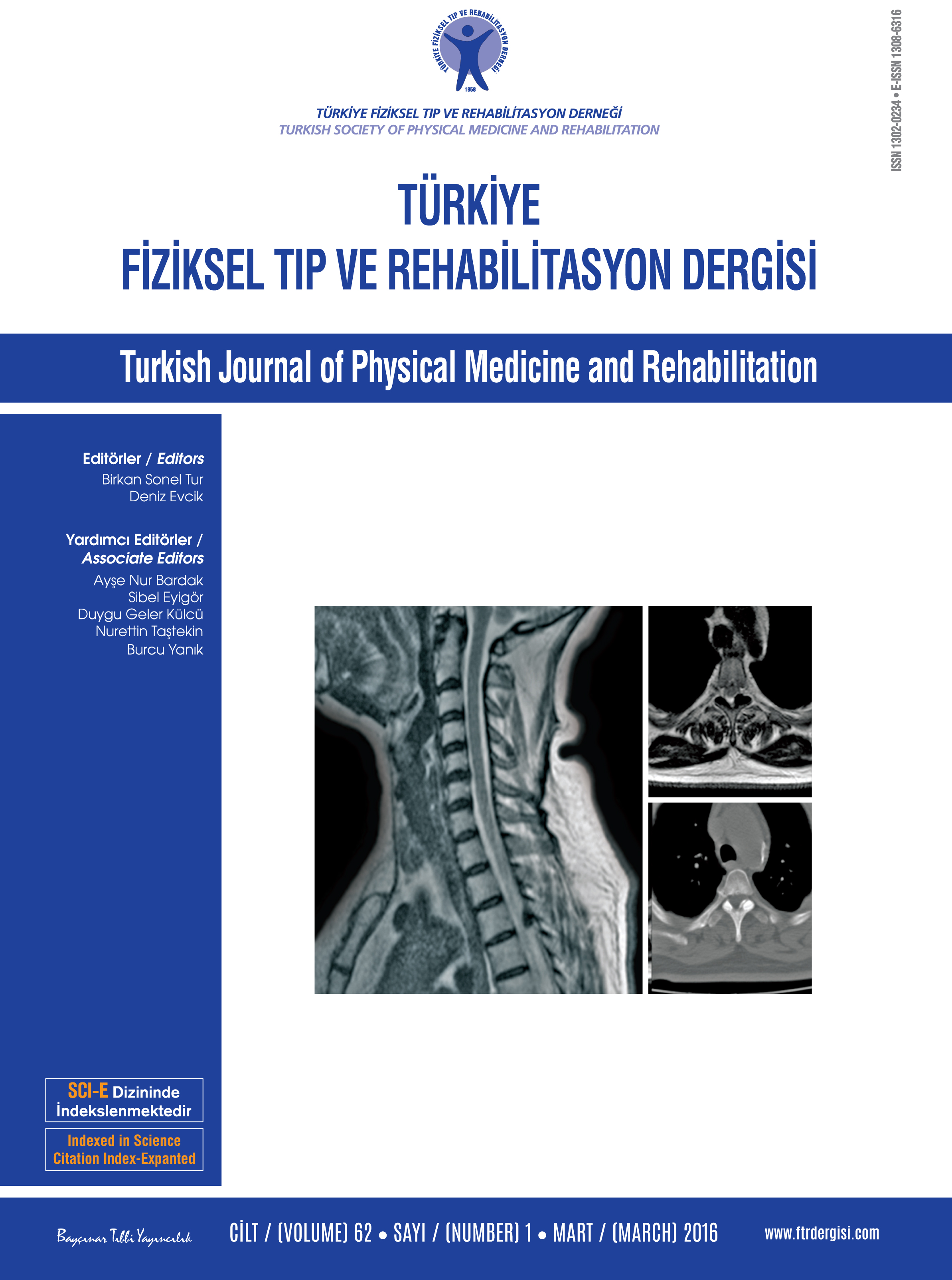The effectiveness of galvanic electrotherapy and a conservative hand exercise program in a rheumatoid hand: a randomized controlled trial
Patients and methods: Between March 2012 and November 2012, 30 female patients with rheumatoid arthritis (mean age 54.0±11.2 years; range 50 to 75 years) who were followed in our outpatient clinic were randomized into two groups. The study group (n=16) was administered the galvanic electrotherapy combined with a conservative exercise program. The patients in the control group (n=14) were administered the conservative exercise program alone. The pain level of the hand was evaluated using the Visual Analog Scale (VAS). Hand grip and pinch strength were measured by dynamometry. The level of disability was examined using the Health Assessment Questionnaire (HAQ). The functional disability of the hand was assessed using the Duruöz Hand Index (DHI). All measurements were performed on both hands before and immediately and at five weeks after therapy.
Results: The VAS scores did not significantly differ between the groups. In the study group, a significant increase was noted in the grip strength of the right and left hand between the first and second measurement (p=0.011 and p=0.025). In the control group, there was no significant difference between the measurements in terms of the grip strength of the right hand. In the study group, significant differences in the HAQ scores were recorded between first and subsequent measurements (p=0.001 and p=0.007).
Conclusion: Our study results show that the galvanic electrotherapy and conservative hand exercises are effective in the treatment of rheumatic hands.
Keywords : Hand exercise; galvanic electrotherapy; rheumatic hand

















